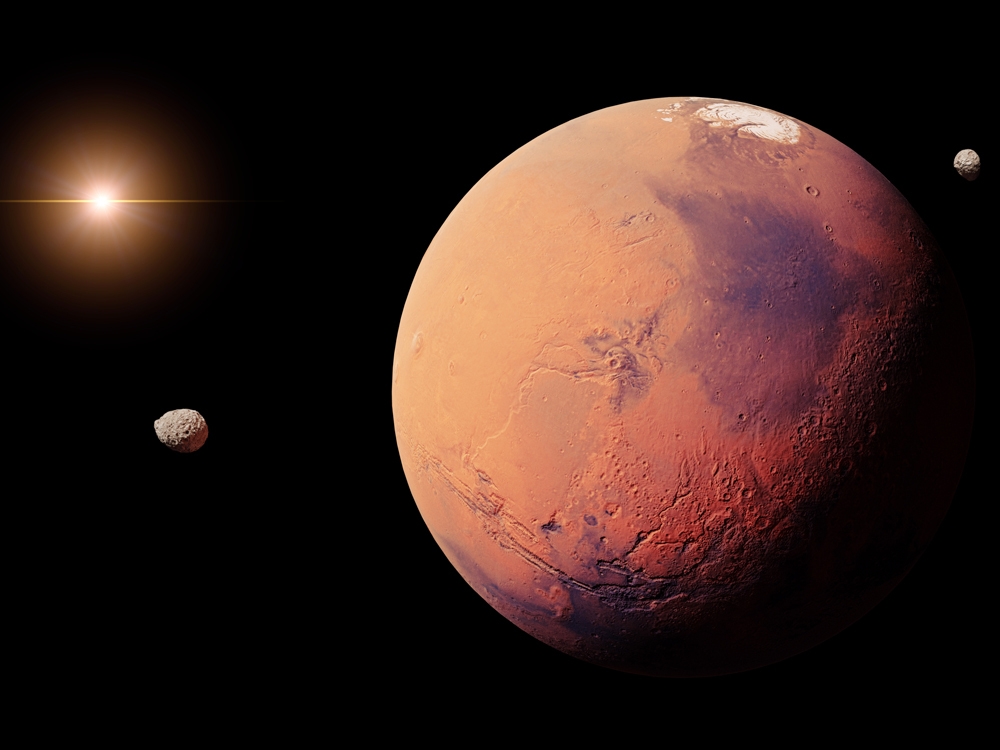
For decades, the Earth has had a companion — or, depending if you see it as more of an ominous presence, a stalker — hovering without most people realizing.
Following reports of Earth’s supposed second moon, experts have discovered a number of celestial objects over the years which they have called “quasi-moons.”
Scientists at the Pan-STARRS observatory at the University of Hawaii first discovered in August, according to a recent study recently published in Research Notes of the AAS .
The quasi-moons are actually small asteroids that “enter into a kind of resonance with Earth’s orbit, although they aren’t technically orbiting Earth,” the study authors noted.
The new quasi-moon, which they named “2025 PN7,” was among a small group of asteroids, a.k.a. “Arjunas.”
The astronomers analyzed the orbital data and compared it to other Arjunas and determined that 2025 PN7 is here to stay — until 2028, after which it will eventually drift back into open space.
HOW BIG IS 2025 PN7, THE NEWEST QUASI-MOON?
This new quasi-moon is “small, faint and visibility windows from Earth are rather unfavourable, so it is not surprising that it went unnoticed for that long,” study co–author Carlos de la Fuente Marcos, from the Complutense University of Madrid, said.
Unlike the moon with which we are familiar, which is 2,159 miles wide and located about 239,000 miles away, according to NASA , 2025 PN7 has been branded the “smallest and least stable” of the six quasi-moons that have had Earth-like orbits, sitting at a puny 19 metres wide.
In fact, you need a proper telescope to see 2025 PN7.
RECOMMENDED VIDEO
HOW DOES 2025 PN7 COMPARE TO OTHERS?
Scientists have been aware of quasi-satellites since 1991 when they first discovered “1991 VG” — which some believed was an interstellar probe at the time, the Pan-STARRS astronomers noted in their research.
“Over three decades later, it is now widely accepted that such objects are natural and constitute a secondary asteroid belt that occupies the region in which the Earth-moon system orbits around the sun, defining the Arjuna dynamical class,” the study authors explained.
“The Arjunas with the most Earth-like orbits can experience temporary captures as mini-moons of our planet.”
More than 60 years later, while it may seem like this 2025 PN7 has been around for a while, it’s relatively short compared to Kamo’oalewa, another famous quasi–moon that has been orbiting the sun for more than 381 years.
HOW DANGEROUS IS THIS ASTEROID TO EARTH?
There are millions of asteroids in the solar system, but only some come close to Earth, with even fewer posing a risk to hitting our planet.
“Quasi–moons and minimoons are pieces of our neighbourhood in space, and they carry information about where they come from,” experts from The Planetary Society have said.
Quasi-moons like 2025 PN7 are not at all dangerous at all; scientists actually welcome the presence of the non-harmful asteroids near Earth as they can help researchers learn more about the evolution of the inner solar system and how asteroids could potentially threaten our planet.





